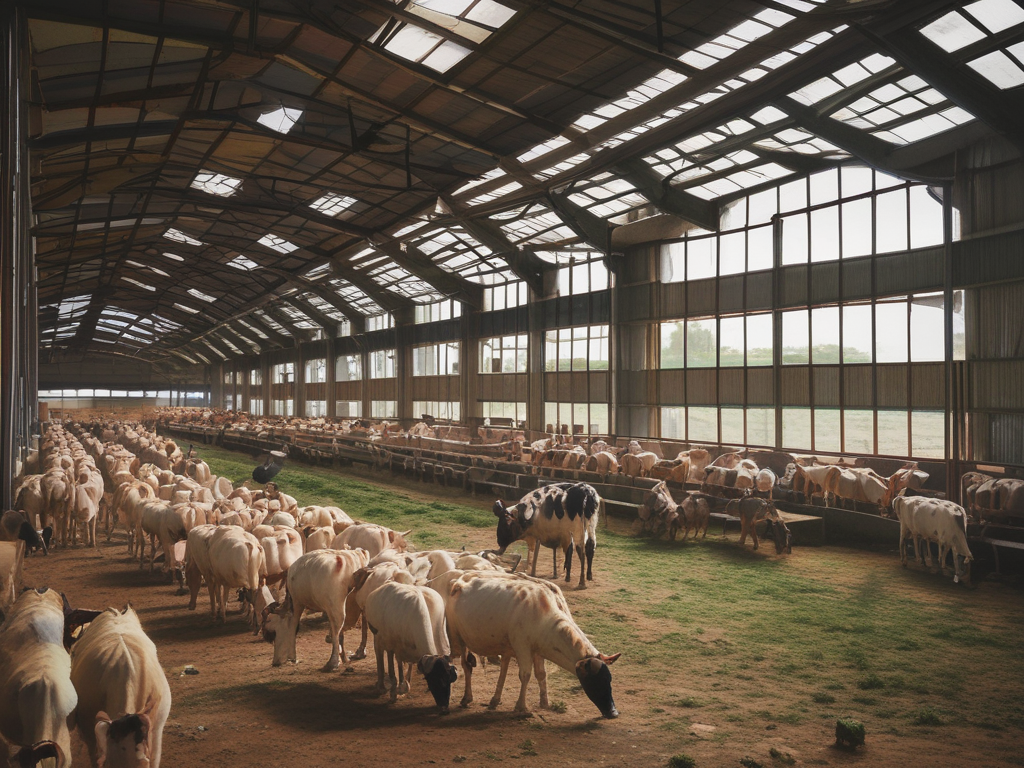Agricultural cooperatives have become a vital part of farming communities in Kenya, transforming the agricultural landscape and improving the livelihoods of thousands of farmers. This case study delves into the significant impact that cooperatives have had on these communities, showcasing specific examples and highlighting key benefits.
Understanding Agricultural Cooperatives
An agricultural cooperative is an organization owned and operated by a group of farmers who pool their resources for mutual benefit. These cooperatives help farmers gain access to better markets, negotiate fair prices, acquire necessary inputs, and receive training and support.
Case Study: Githunguri Dairy Farmers Cooperative Society
One of the most notable examples of a successful cooperative in Kenya is the Githunguri Dairy Farmers Cooperative Society. Established in 1961, this cooperative has grown to include over 22,000 members, significantly impacting the dairy farming sector in Kiambu County.
Economic Empowerment:
The Githunguri Dairy Farmers Cooperative has empowered its members economically by providing them with a stable market for their milk. The cooperative processes and packages milk under the brand “Fresha,” ensuring that farmers receive competitive prices. This stability has enabled farmers to invest in better farming practices and improve their overall productivity.
Access to Resources:
Members of the Githunguri Dairy Farmers Cooperative benefit from bulk purchasing of farm inputs such as animal feeds, veterinary services, and AI (artificial insemination) services. This collective purchasing power reduces costs and ensures that farmers have access to high-quality inputs. Additionally, the cooperative offers financial services, including loans and savings plans, which help farmers manage their finances more effectively.
Training and Capacity Building:
The cooperative provides regular training sessions on best practices in dairy farming, animal husbandry, and farm management. These training programs have led to increased milk production and improved the quality of milk produced. By educating farmers on sustainable farming practices, the cooperative also promotes environmental conservation.
Case Study: Muki Farmers Cooperative Society
The Muki Farmers Cooperative Society, based in Nyeri County, is another exemplary cooperative that has positively impacted its members. This cooperative focuses on tea farming and has over 10,000 members.
Market Access and Fair Prices:
The Muki Farmers Cooperative negotiates better prices for its members’ tea, ensuring that farmers are not exploited by middlemen. By selling their tea collectively, members benefit from economies of scale, which increases their bargaining power and ensures higher profits.
Value Addition:
To maximize profits, the Muki Farmers Cooperative has invested in tea processing facilities. By processing tea locally, the cooperative adds value to the raw product, resulting in higher returns for the farmers. This value addition also creates jobs within the community, contributing to local economic development.
Social Impact:
Beyond economic benefits, the Muki Farmers Cooperative has had a profound social impact. The cooperative invests in community development projects, such as building schools and health facilities, which improve the overall quality of life for its members. Additionally, the cooperative provides scholarships for members’ children, promoting education and creating a brighter future for the next generation.
Broader Impact on Kenyan Farming Communities
The success of cooperatives like Githunguri and Muki highlights the broader impact of agricultural cooperatives on Kenyan farming communities. These cooperatives have not only improved the economic status of farmers but also fostered a sense of community and cooperation. By working together, farmers can overcome challenges that would be insurmountable individually.
Women Empowerment:
Cooperatives have also played a crucial role in empowering women in agriculture. Many cooperatives have initiatives specifically aimed at supporting female farmers, providing them with the resources and training needed to succeed. For example, the Kenya Women Microfinance Bank partners with cooperatives to offer financial services tailored to women, enabling them to invest in their farms and increase their productivity.
Sustainable Farming Practices:
Through cooperatives, farmers are adopting more sustainable farming practices. Training programs emphasize the importance of crop rotation, organic farming, and conservation techniques. This shift towards sustainability not only protects the environment but also ensures long-term agricultural productivity.
Conclusion
Agricultural cooperatives have made a significant impact on farming communities in Kenya. By providing economic empowerment, access to resources, training, and support, these cooperatives have transformed the agricultural sector. The examples of Githunguri Dairy Farmers Cooperative Society and Muki Farmers Cooperative Society demonstrate the tangible benefits that cooperatives bring to farmers.
For readers in Nigeria and the rest of Africa, the success of Kenyan cooperatives serves as an inspiring model. By embracing the cooperative approach, farming communities can achieve greater economic stability, social development, and sustainable agricultural practices. Investing in and supporting cooperatives is a valuable step towards a more prosperous and resilient agricultural sector.
This case study article provides valuable insights into the impact of cooperatives on farming communities in Kenya, highlighting specific examples and key benefits. By applying these principles, readers can better understand the potential of cooperatives to transform agricultural practices and improve livelihoods across Africa.


